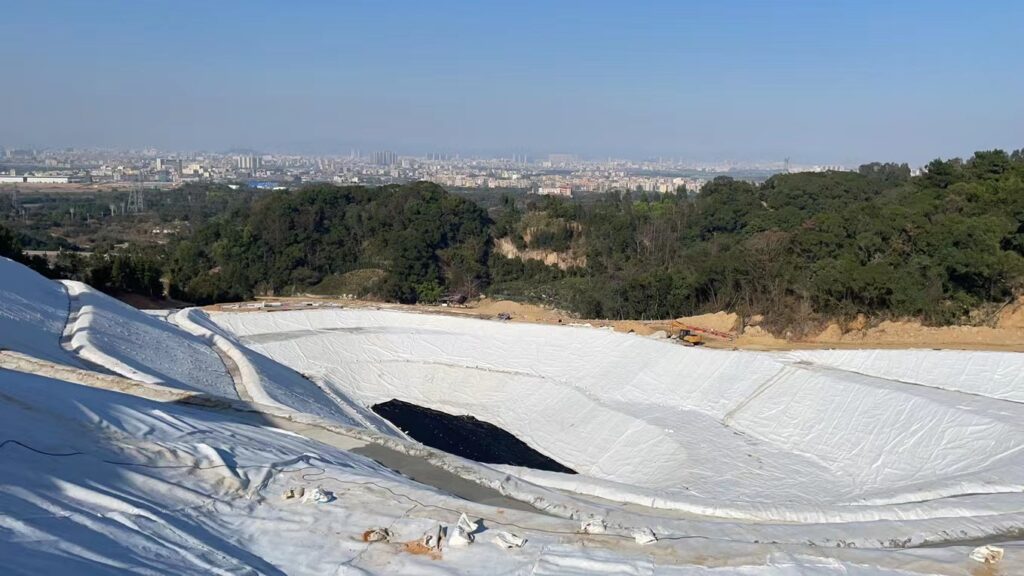Geotextile Example
Geotextiles are available in various types and specifications to suit different civil engineering and construction applications. Here are some common examples of geotextiles:
Geotextile for foundation reinforcement: This kind of geotextile is usually used to reinforce the soil, improve the soil’s bearing capacity and prevent soil settlement. It is widely used in roads, railways, airport runways and foundation projects.
Soil Erosion Control Geotextiles: This type of geotextile is used to mitigate and prevent soil erosion, particularly in riverbanks, slopes, rock retaining walls, and land consolidation projects. It can cover the soil surface, prevent water flow and wind from eroding the soil, and promote the growth of vegetation.
Geotextiles for Lawn and Floor Reinforcement: This type of geotextile is commonly used to enhance the stability of lawns, parking lots, sidewalks, and patios to reduce cracking, settling, or erosion.
Geotextiles for Sewage Treatment: In sewage treatment systems, geotextiles are used to filter and purify sewage. It helps water slowly penetrate into the soil while maintaining the structure and stability of the soil.
Geotextile for river and shoreline restoration: This geotextile is used to repair rivers and shorelines to control erosion, restore shoreline vegetation and mitigate wave impact.
Geotextiles for Underground Drainage Systems: This type of geotextile is used to create underground drainage systems to control water levels, drain water, and remove excess moisture.
Geotextiles to protect pipes and cables: When burying pipes and cables, geotextiles can be used to provide a protective layer against mechanical damage and chemical corrosion.
Geotextiles for Horticulture and Agriculture: Geotextiles are used in horticulture and agriculture to control weed growth, provide soil protection and maintain soil temperature. It can be used to cover vegetable gardens, planting beds and flower beds.

Does geotextile absorb water?
Typically, geotextiles are permeable, meaning they allow moisture to penetrate.
However, the water permeability of geotextiles can vary compared to regular fabrics, depending on the type of fabric and manufacturing process.
The permeability of geotextile is to allow groundwater or rainwater to penetrate into the soil while still providing support and reinforcement to the soil.
This property makes geotextiles useful in applications such as soil erosion control, roadbed reinforcement, lawn and floor reinforcement, and more.
Through water permeability, geotextiles can help the soil maintain stability, reduce water erosion on the soil, and promote the growth of vegetation.
However, the exact permeability depends on the type and manufacturer of the geotextile.
When selecting a geotextile, the water permeability of the fabric is often considered to ensure it matches the specific project needs.
In practical applications, if complete waterproofing is required, anti-penetration materials such as geomembranes are usually chosen.

